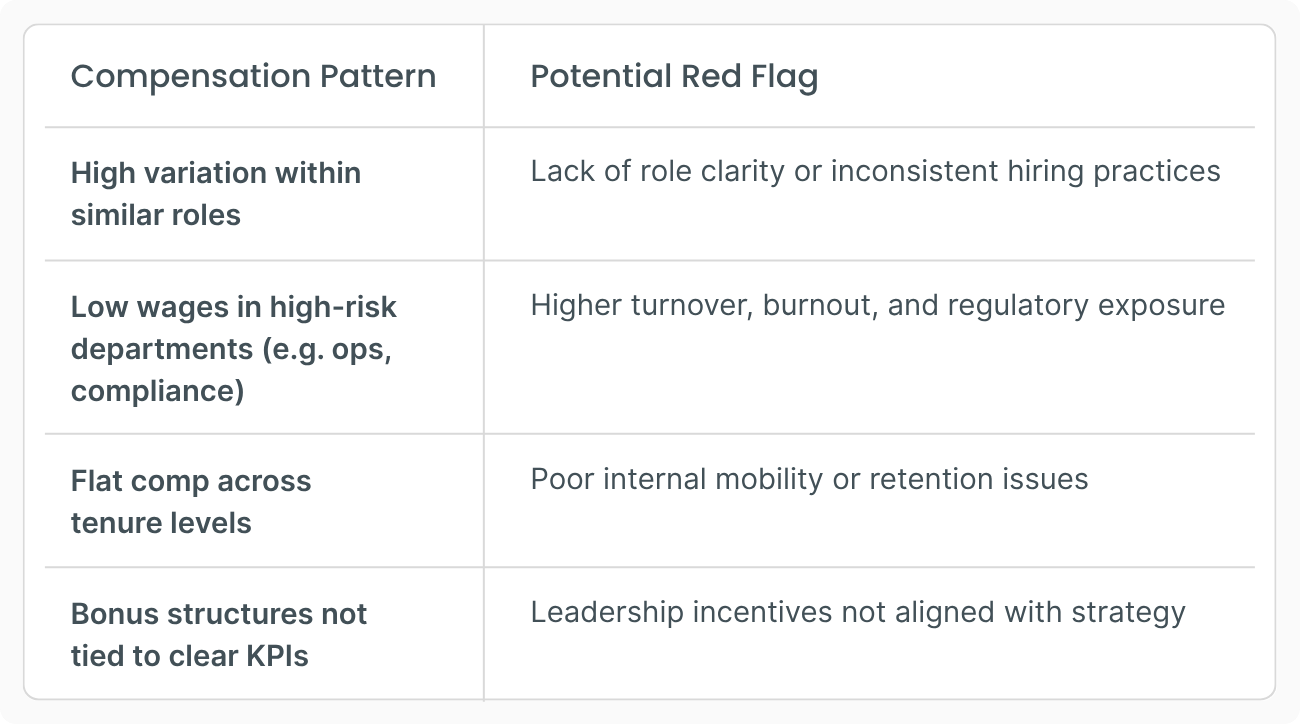Compensation data rarely features in the first‐pass financial model, yet it quietly shapes key drivers of a company’s trajectory: execution speed, cultural stability, and buyer confidence. In our work with middle-market and large-cap funds, we see pay patterns serve as an early read on leadership discipline and talent risk long before formal diligence begins. Put simply, clean compensation signals a well-run machine. Unexplained gaps hint at inefficiencies that margin analysis alone can’t surface.
It’s not just about salary bands or equity pools. Fair pay—or the lack of it—is one of the earliest signals of deeper issues that affect retention, performance, and ultimately, enterprise value. In other words, compensation patterns tell a story. Smart investors know how to listen early, before diligence makes it mandatory.
The pay gap isn't just a social risk. It’s an operational one.
When we think of “pay equity,” we often think in moral or regulatory terms: compliance with labor law, pressure from advocacy groups, or gender equity headlines. Those are important, but for private equity investors, there’s a more immediate concern:
Pay gaps often signal talent misallocation, culture drift, or weak management accountability. None of which help you hit a multiple.
If two people doing comparable work are being paid drastically different amounts, ask yourself:
- Is leadership aware?
- Are roles and responsibilities clearly defined?
- What incentive structures are really in play?
These aren’t HR questions. They’re operational questions. And they shape the durability of EBITDA.
Know before you buy
Most diligence processes include some form of executive comp review. But by then, you’re looking at polished summaries and board-approved numbers. You’re seeing the tip of the iceberg.
What gets missed:
- Mid-level compression: Managers leaving because their direct reports earn more.
- High turnover among underpaid teams: Which roles are hardest to retain—and why?
- Non-standard bonuses: Are you rewarding outcomes or patching morale problems?
We’ve seen PE-backed companies lose seven figures in exit value because of compensation issues that could’ve been spotted earlier—if someone had been looking at the full picture.
What to look for (and what it reveals)
Here are a few key signals we often surface at Tablecloth.io:

Each of these can become a real cost—through attrition, lawsuits, missed milestones, or degraded culture. And in today’s labor market, people risk = performance risk.
Fair Pay = Smart Risk Management
We're not arguing that everyone needs to be paid the same, or that compensation needs to be “perfect.” But we are saying this:
Compensation equity is measurable. Patterns matter. And those patterns often reveal risk earlier than your finance dashboard ever will.
By integrating compensation data into your monitoring process—before, not after, a deal—you give yourself:
- More accurate views of operational maturity
- A clearer narrative for buyers down the road
- A stronger position when engaging LPs who care about workforce metrics
It's not about optics—it's about being prepared
At Tablecloth.io, we believe fair pay is good business. But more importantly for PE firms, it's smart business. Because the sooner you see the signals, the sooner you can act—and the more value you can protect before diligence ever starts.
If you’re not looking at compensation equity, ask yourself: What risks are you not seeing yet?


.jpeg)
.jpg)







